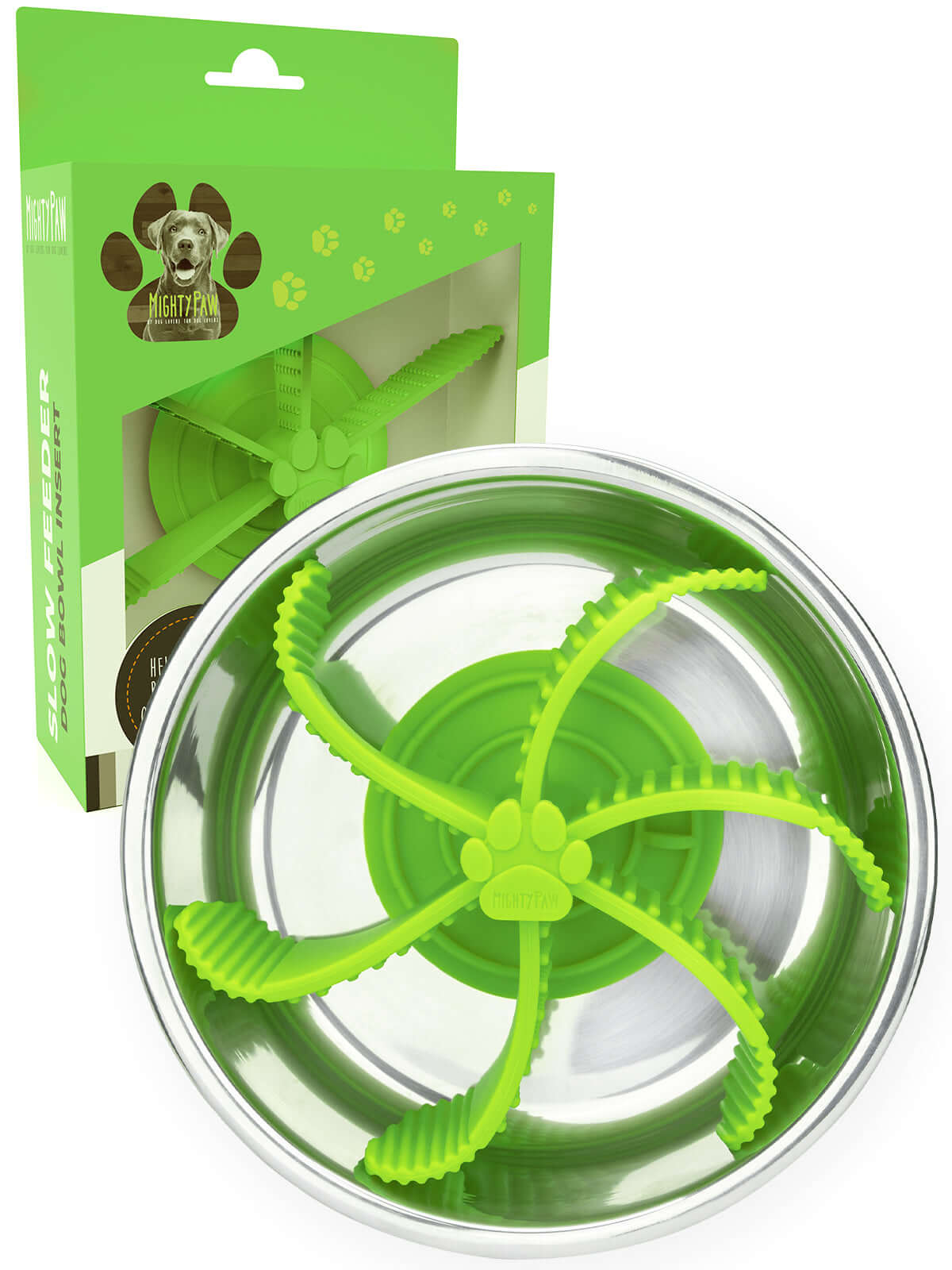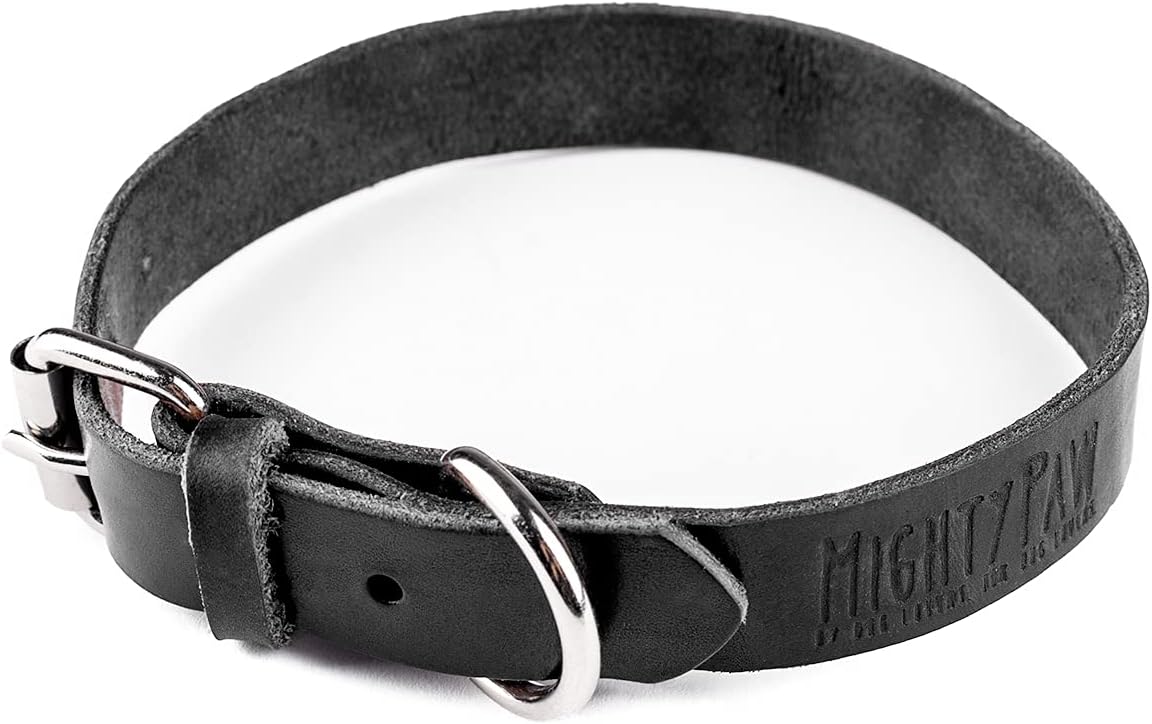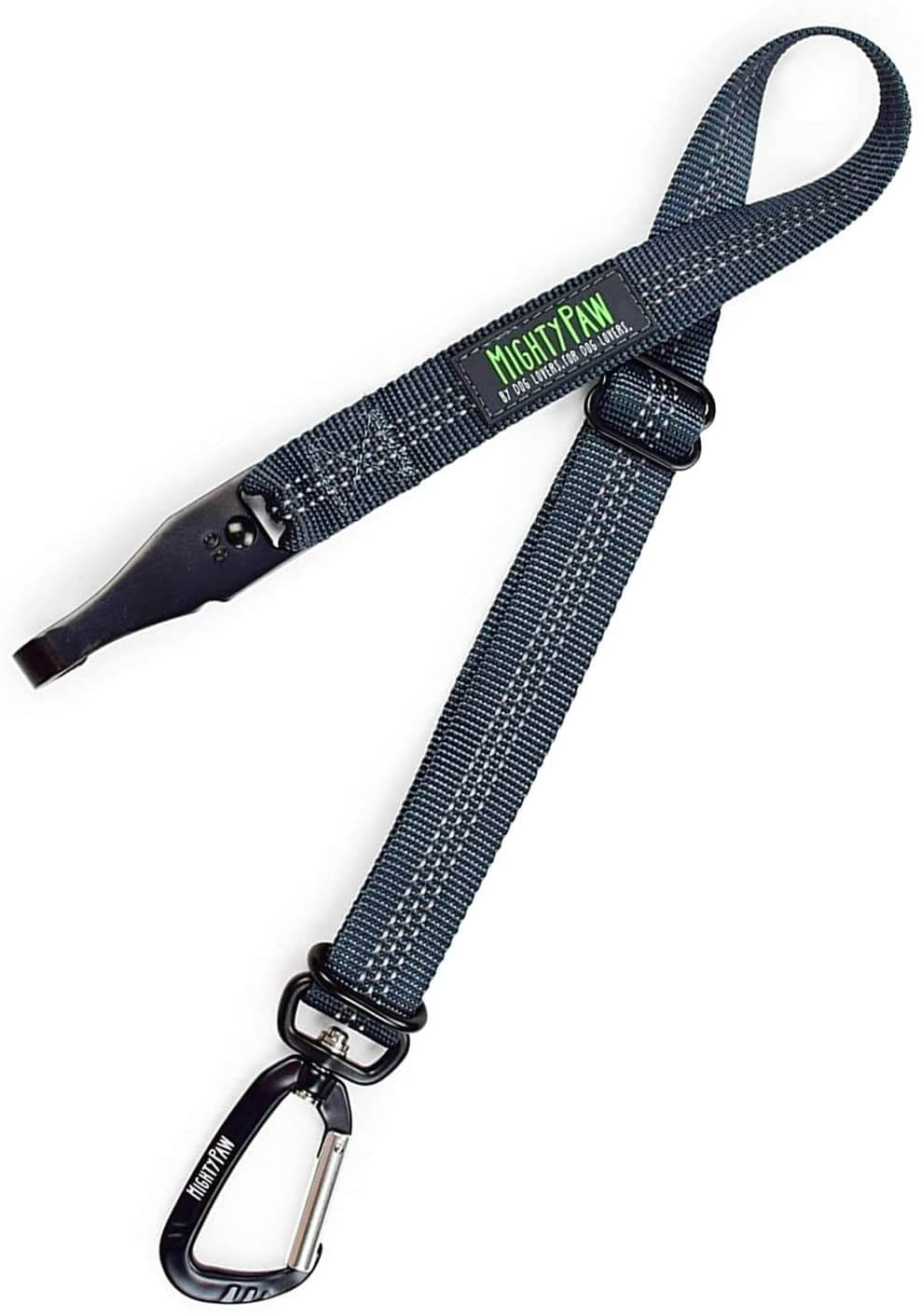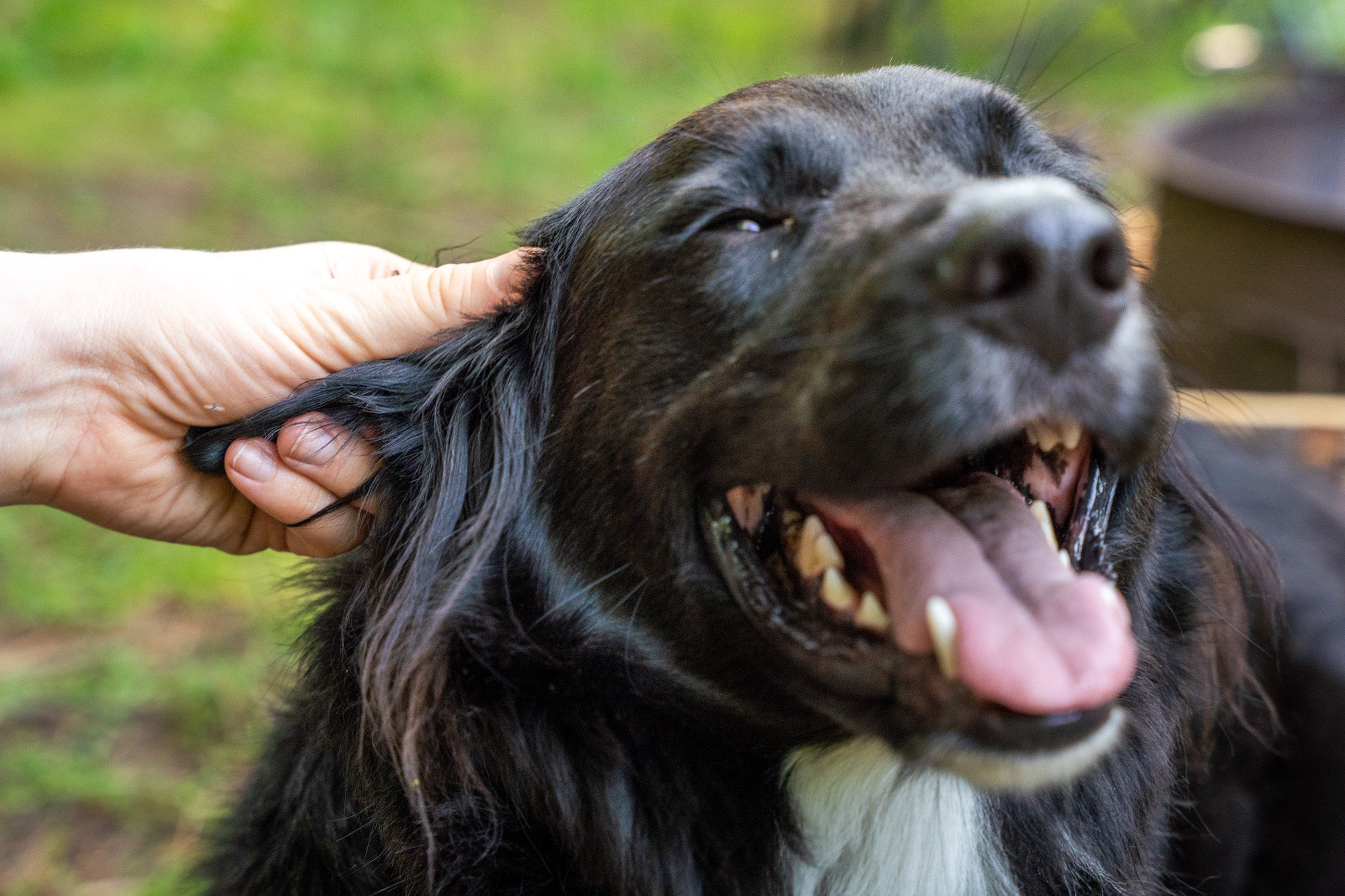How you can help your dog be itch-free
It can be frustrating and painful to watch your dog scratching incessantly and suffering with inflamed skin, as you try to find a solution and make everything all better again. We know the feeling with our own dogs!
We've learned with our Mighty Paw crew that the first step to overcoming allergic reactions is to know what you're dealing with. So let's jump into the 3 major causes, what you can do to get on top of each -- and ways you can fortify your dog's immune system to help protect against all of them.

1) Rule out (or confirm) fleas first.
It's worth figuring out right off the bat if your dog's itching and skin-biting is caused by fleas since they can quickly multiply exponentially, increasingly torment your pup, and take over your home while they're at it. Fleas are more than an itchy nuisance for your dog; they can lead to serious health issues, including flea allergy dermatitis, tapeworms, and anemia.
How to identify a flea infestation on your dog
- Excessive scratching, licking, or biting at the skin
- Red patches (flea bites) or hair loss
- Flea dirt (tiny black specks) in your dog's coat
- Visible fleas moving on your dog's skin
Since fleas are tiny and can be hard to spot on your dog, your best weapon for diagnosing a flea presence is a simple flea comb:
- Grab some paper towel and a bowl of soapy water.
- Dip the comb in the soapy water as you comb through your dog's fur with the flea comb.
- Wipe the comb on the paper towel between strokes.
- Any time you see a flea, submerge the flea comb in the water so the flea can't jump off and escape.
- Flea dirt is the telltale sign your dog has fleas -- even if you can't see any fleas! Flea dirt looks like little black specks. Wipe the specks onto the paper towel. If you see reddish/brown marks, it's flea dirt containing the blood (ugh) the flea has been consuming.
The link between fleas and allergies
Flea saliva is a common allergen for dogs, and even a single flea bite can trigger an allergic reaction and flea allergies in some dogs. Flea allergy dermatitis can cause severe itching and discomfort and escalate into secondary infections.
Tips for keeping your dog and home flea-free
Maintaining a clean environment is critical in flea prevention. Regular vacuuming and washing your dog's bedding can help prevent fleas from establishing a presence (and laying eggs) in your home. Keep your dog bathed and prepped with natural flea & tick shampoo, conditioner, and herbal flea control/naturally-repelling sprays.
- Vacuum carpets, furniture, any soft surfaces frequently.
- Wash your dog's bedding and any soft toys or blankets in hot water weekly (or more often if you suspect an active flea infestation).
- Avoid areas you know might be flea-populated like tall grasses when adventuring with your dog.
- Use all-natural flea & tick shampoo/conditioner regularly as well as a natural flea/tick repelling spray before outdoor activity to protect your dog and keep your pup's immune system strong at the same time. (Chemical pesticide treatments on or around your dog to eliminate fleas can weaken your dog's immune system and trigger allergies and other adverse reactions.)
If your dog is already affected by fleas, you'll want to amp up all these efforts to nip the fleas in the bud asap and keep it going for a while until you're sure all fleas/flea eggs are gone. If your dog is showing signs of a significant allergic reaction to the fleas, you might want to consult your veterinarian for an antihistamine for immediate symptom relief for your pup.
2) Check for yeast overgrowth, a common "allergic reaction" trigger.
Many dogs with “allergic reaction” symptoms actually turn out to have yeast overgrowth that happens when their body's natural yeast balance is thrown off. Yeast infections are often triggered by warm, moist environments where yeast loves to grow -- floppy ears, moisture under a collar, or your pup not being fully dry after a bath or a swim. Taking antibiotics can unbalance the good and bad bacteria in dogs' systems (just as in humans) and result in a yeast infection. Dogs who are stressed and have compromised immune systems are also susceptible to yeast overgrowth.
What to watch for in your dog
In most dogs, yeast overgrowth symptoms look a lot like a skin allergy and other allergies that show up through dogs' skin and coats.
"Allergy" symptoms that are signs of yeast overgrowth:
- Itching, especially on and around ears, sides/armpits, and paws
- Incessant paw-licking
- Ear discharge, often dark-colored
- A cheesy, bread-like smell on the body (more than the normal “Fritos” feet smell )
Tips to prevent yeast overgrowth
- Keep ears (a major site for yeast infections) clean and dry with a natural, astringent, antifungal ear wash: we recommend our Mighty Ear Wash created specifically to keep dogs' ears healthy.
- Use a diluted apple cider vinegar rinse after or between baths and for a paw soak anytime to keep yeast in check.
- Always make sure your dog is completely dry after baths, swimming, etc, with special attention to spots that trap moisture (ears, underarms...).
- Avoid/limit antibiotics.
- Add a probiotic to your dog's routine to keep your pup's gut in balance and promote the good bacteria: our Mighty Probiotic Chews are vet-formulated to support and balance your pup's system.

3) Understand the signs and symptoms of various dog allergies and your individual dog.
True allergies are the result of your individual dog's body experiencing a hypersensitivity to some everyday element. That can mean anything from a type of food to something in your dog's environment such as pollen or mold or a household cleaner or even the ubiquitous dust mites in our homes.
So many things we hardly notice in our dog's world can trigger allergic reactions that can show up as skin allergies, seasonal allergies, allergic dermatitis, etc.
Allergy symptoms to watch for
- Persistent itching/excessive scratching
- Biting/excessive grooming and licking (paws, hindquarters)
- Skin irritations - inflamed skin or hyperpigmentation
- Lesions on paws/hot spots
- Repeated ear infections
- Secondary skin infections
- Excessive shedding
- Tear stains
- Sneezing and coughing
- Vomiting or diarrhea (more common with food allergies/sensitivities)
Tips to prevent allergies in your dog
It's important to keep a watchful eye on what can seem like otherwise harmless substances even BEFORE they become an issue with your dog. And of course, it always helps to know your dog -- how allergy-prone your pup is and what kind of things your dog has been sensitive to in the past.
Some everyday allergy triggers to edit out of your dog's environment:
- Detergents and cleaning products with harsh chemicals
- Artificially-scented products
- Chemically-based lawn care products (pesticides, herbicides)
- Dust mites that are everywhere in our homes
- Seasonal allergens tracked in on paws and shoes
- Flavored medications that can trigger allergic reactions in dogs as well as common flea & tick preventives that can cause adverse reactions
- And the list goes on...
Consistently following the tactics for cleaning house to prevent fleas (above) can also reduce common environmental allergens like dust mites and seasonal allergens that find their way into your home.
A quick paw wipe or paw soak when your dog comes in from outside can work wonders toward removing seasonal allergens that could get tracked around your house and transferred to your dog's mouth and eyes.
And many household cleaners, detergents, and lawn supplies are available in chemical-free, organic options to be switched in to replace the harsh, chemical versions that can trigger topical and airborne allergies and other issues.
How to fortify your pup against allergies from the inside out
Feeding your dog a fresh, real food diet naturally full of essential nutrients and probiotics goes a long way to building a strong immune system to protect your dog. Supplementing your dog's diet with probiotics and immune-boosters like turmeric and omega-3s can arm your dog against allergies -- and strengthen your dog's resistance to just about everything that might threaten your pup's health and vitality.
At Mighty Paw, we're big believers in strengthening all our dogs from the inside out with key nutrients as well as probiotics so all that goodness can be absorbed and put to work. That's why we formulated all-natural nutritional chews with veterinarians to support your dog on multiple levels:
- Mighty Immune + Itch Chews - created with omega-3s, quercetin, turmeric, and key antioxidants for a foundation against allergens and infections, and to promote overall wellness
- Mighty Probiotic Chews - to promote proper gut function and nutrient absorption to strengthen your dog's immune system and keep your pup truly well

We believe in helping you keep your dog safe, healthy, and happy so you can live your fullest, best lives together. We're dedicated to finding ways to help you bring more wellness to your dog's life and more actionable knowledge for supporting your dog.
That's why our focus and commitment is always to provide high-quality products that are safe, durable, and practical for everything you need to keep your dog healthy and enjoying every adventure large and small by your side.









































































